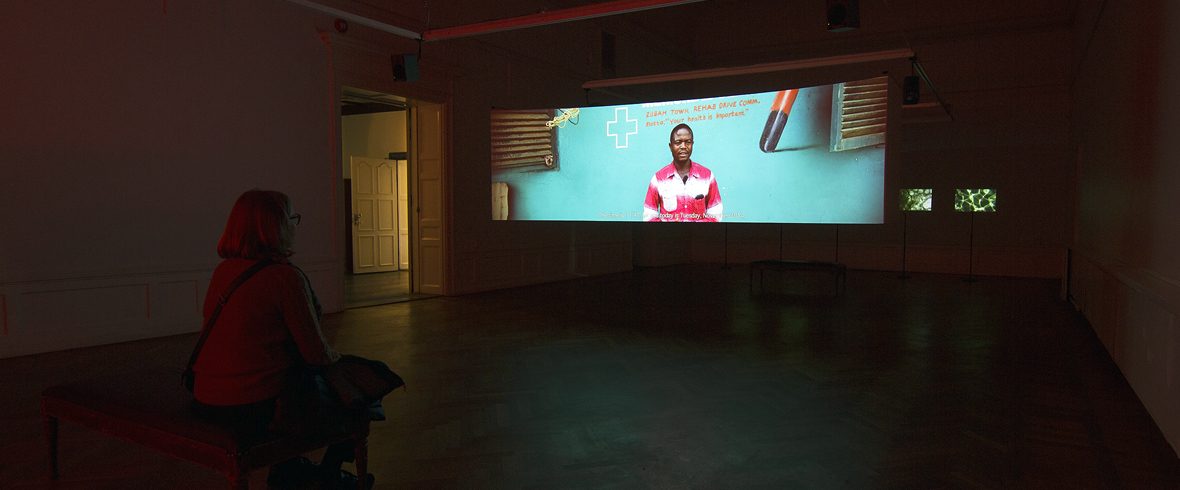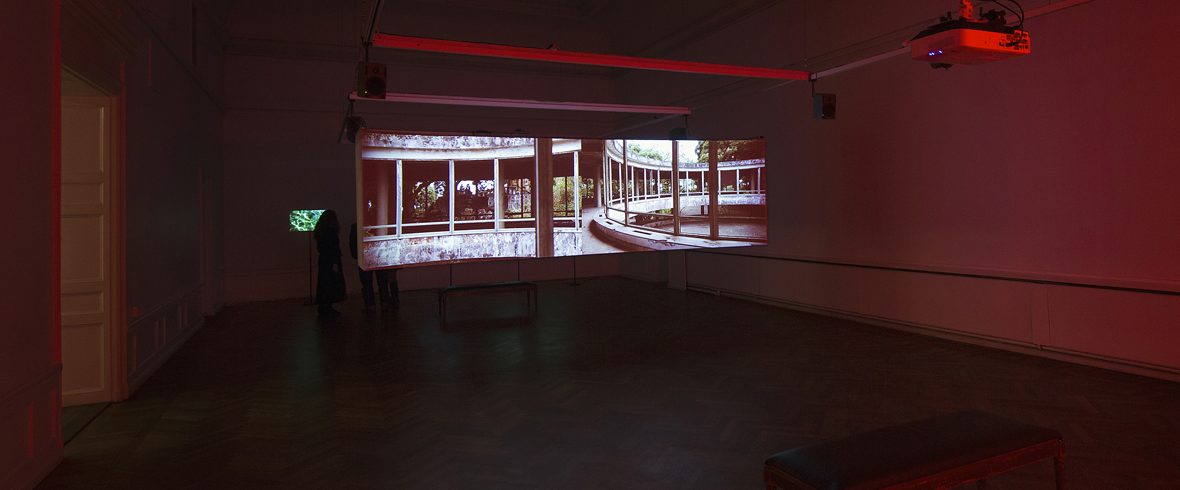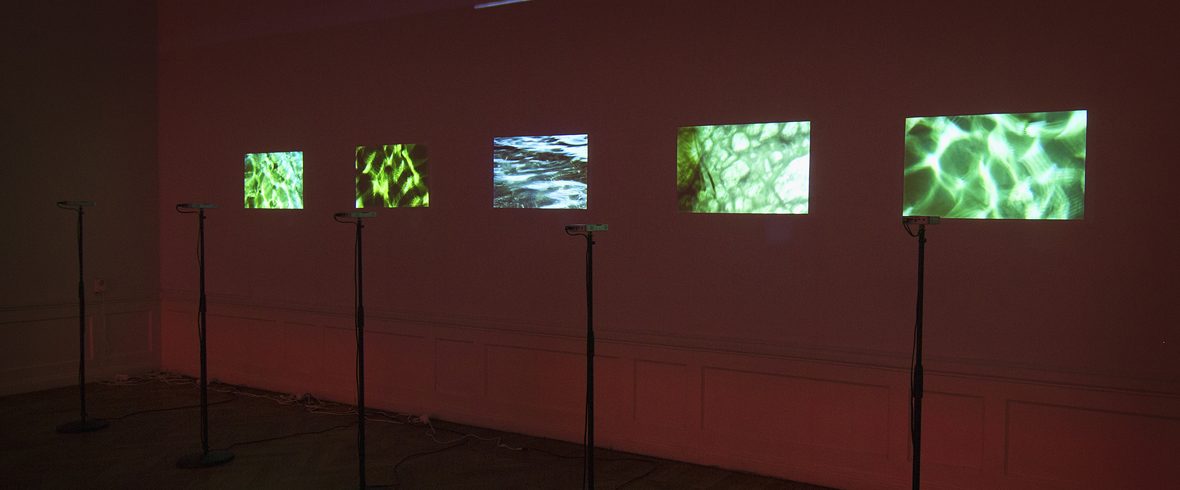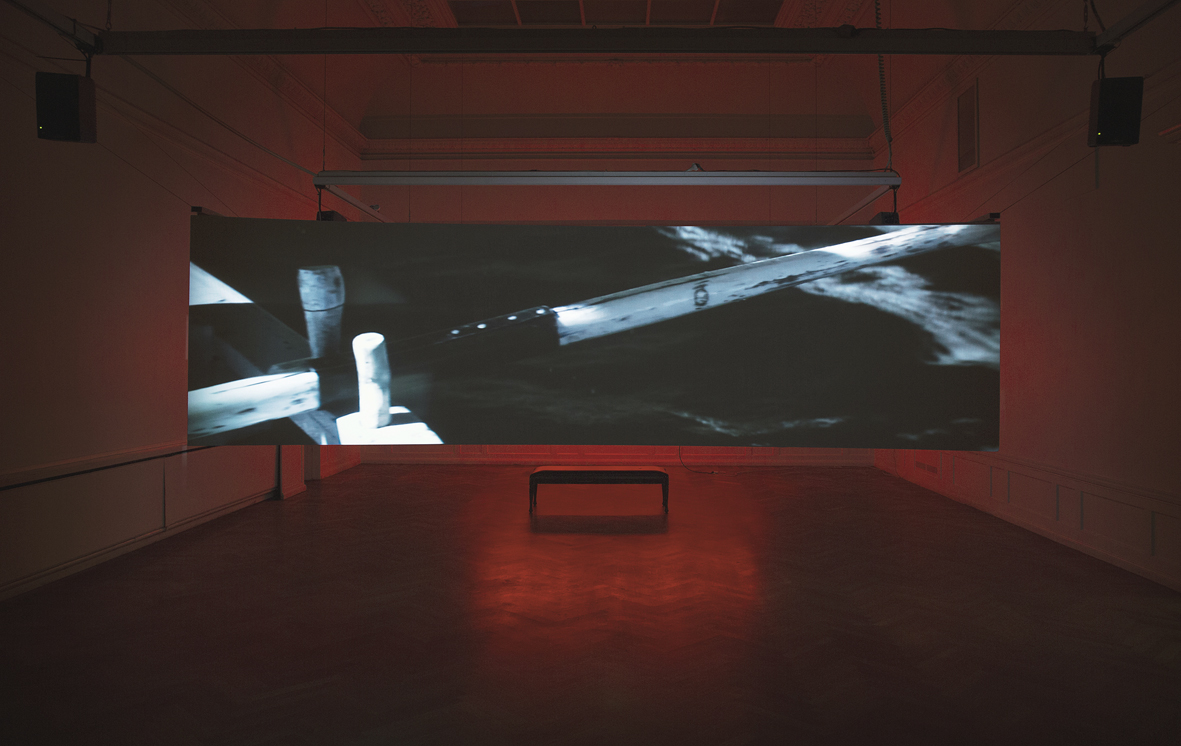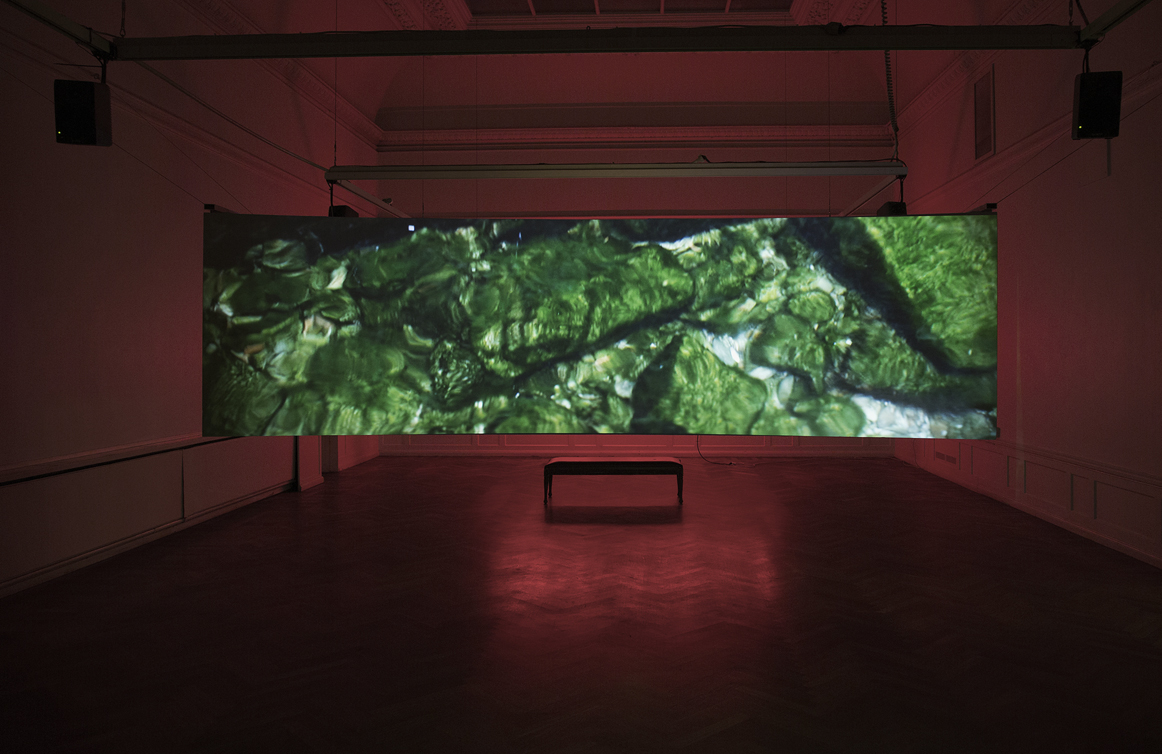Exhibition
Widescreen video installation, neon sign, mini projector installation
Konstnärshuset – Stockholm, Sweden
17 October–15 November 2015
WHO THE FOOL is a site-specific film installation created for Konstnärshuset’s Stora Galleriet in Stockholm. Hjelm’s starting point for this exhibition is a reflection on the recent ebola epidemic breakout in Africa while filming in Liberia. For the artist, the epic proportion of the spreading of this virus serves as a stark reminder of the fragility of life. The exhibition title is thus inspired from a medieval artistic genre known as the “dance of death” which came forth during the Great Plague and showed that no matter one’s position in life, death unites us all in a common humanity.
“Who was the fool, who the wise man, who the beggar or the Emperor? Whether rich or poor, all are equal in death.”*
When the Ebola epidemic broke out in March 2014, the simplest human touch was quickly discouraged across the three worst affected countries in West Africa. Avoiding close contact with the bodily fluids of infected individuals became imperative. In Liberia, people had to change how they greeted each other and how they said their last goodbye. Traditional burial ceremonies were rewritten and mourning practices such as washing the bodies of the deceased were banned. This was also the last time Mats Hjelm was in the Liberian capital, Monrovia, filming for his most recent documentary film, and the starting point for creating the artworks for this exhibition.
Unable to remain in Monrovia, Mats entrusted Preston Jackson, a Liberian social worker, with a film camera, a sound recorder and a set of instructions. Preston, who has previously appeared in Mats’ last exhibition (Taste of Salt at Cecilia Hillström Gallery in Stockholm, 2013), now returns both as a protagonist and a filmmaker himself.
In the year that followed, Preston travelled with this film camera around the country making short videos about the Ebola crisis: visiting clinics and schools, interviewing friends, speaking to victims of the epidemic, and reflecting on the news while driving. The memory cards were sent back to Stockholm by Fedex in envelopes that arrived with several weeks’ delay after being quarantined at the border. The film installation Liberian Time tells the story of that year, and the story of their Mats’ and Preston’s relationship through filmmaking.
Liberian Time is a double-sided widescreen projection in the middle of the exhibition room. On one side of the screen, we witness Mats’ and Preston’s filmic collaboration. Mats presents the process of Preston’s field reports as a form of participatory filmmaking – a process whereby members of a community are empowered to tell their own stories and then share them with an audience. On the other side of the screen, Hjelm has filmed water surfaces with extra wide-angle anamorphic lenses, commonly known as Cinemascope, that seem to dissolve the walls of the room into a liquid state, which is also the preferred medium for transmitting the virus.
At the edges of the room, the artist complements this filmic journey with words that resonate across fragility and universality. An installation of miniature projectors showing water surfaces called No Money, No Love confronts us with the fleetingness of capital and of affection. Words flash in writing which then echo in song throughout the room.
A lone singing voice remembers better times in Liberia, when the Ambassador Band played at the Tanganyika Club in the once luxurious Ducor Palace Hotel in Monrovia, which closed in 1989 just before the bloody coup that plunged the country into a civil war. The country’s fragility is reflected in the ruins of this hotel in photographs at the entrance to the exhibition room.
Lastly, the neon artwork Where One Is The Other Must Be, reminds us that the “other” to life (or death) looms hauntingly above us, thus completing the cycle of works that compose this instance of a contemporary “dance of death,” which is also a dance of transformation.
– Isabel Löfgren, October 2015
*(Vierzeiliger oberdeutscher Totentanz, Heidelberger Blockbuch, approx. 1460)
Camera, Director, Production: Mats Hjelm
Voice, Camera: Preston Jackson, Liberia
Camera, Voice: Johnson Paye, Liberia
Camera: Annika Busch, SE
Editing: Bernhard Winkler, SE
Sound design: Peter Adolfsson, SE
Production and location sound, Photography: Claes Herrlander, SE
Consultant: Jesper Johansson, SE
Text: Isabel Löfgren, BR/SE
Translation: Robert Stasinski, SE
Thanks to: Swedish Film Institute, Swedish Television, Herrlander Pictures
Press: Karsten Thurfjell i Kulturnytt på Sveriges Radio, 26 October 2015
Installation views
